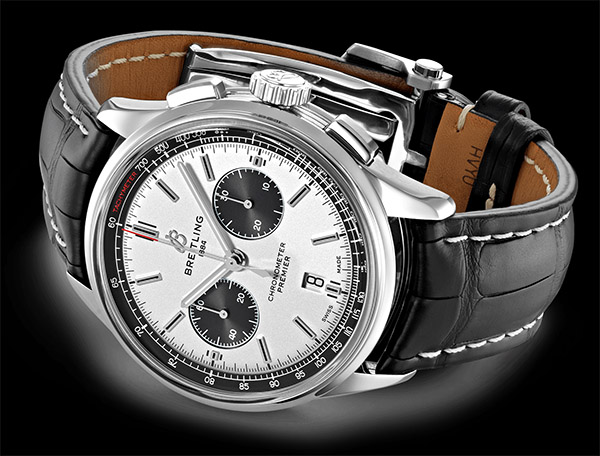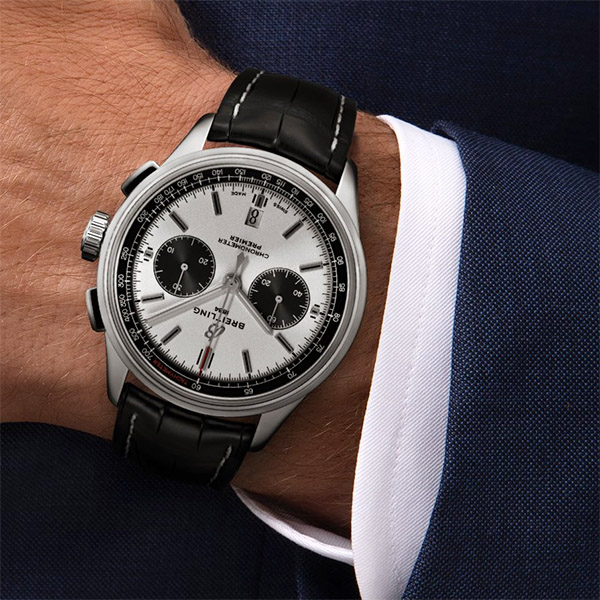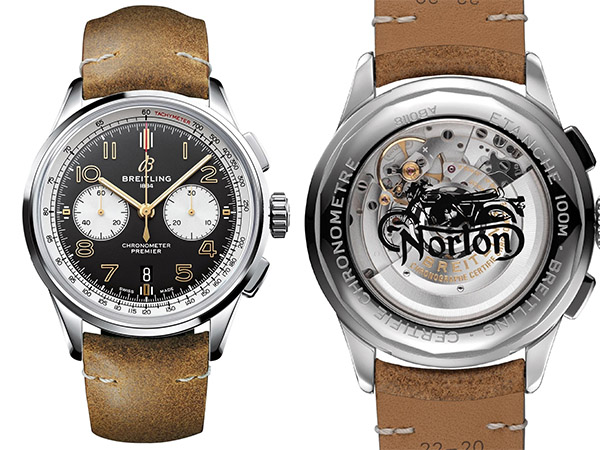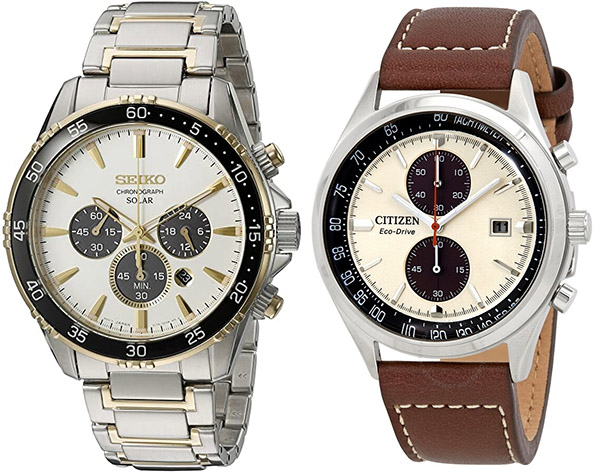By Joe Berk
Some time ago, I wrote a blog about panda watches. In it, I mentioned the Orient Panda. I’ve been wearing one for several months now and I thought I’d share my opinions.
From an accuracy perspective, it just doesn’t get much better than what this Orient provides. I set it to the U.S. National Institute of Standards and Technology (NIST) official time site, and it is still spot on after several months (no gain, no loss; it is accurate to the second). The watch has a solar-powered quartz movement; you can’t realize that kind of accuracy with a mechanical watch.
I didn’t care for the Orient Panda’s stainless steel bracelet. The bracelet’s appearance is good and the construction appears to be of high quality, but it was uncomfortable. Maybe that was due to the bracelet’s relatively sharp edges. I played around with the adjustment by removing links and then putting them back in, and also by moving the pin to different positions on the clasp, but I couldn’t get it to fit my wrist comfortably. It was either too tight (which made it even more uncomfortable), or it would swim around on my wrist with the watch going from the top of my wrist to the opposite side (I hate it when a watch does that).
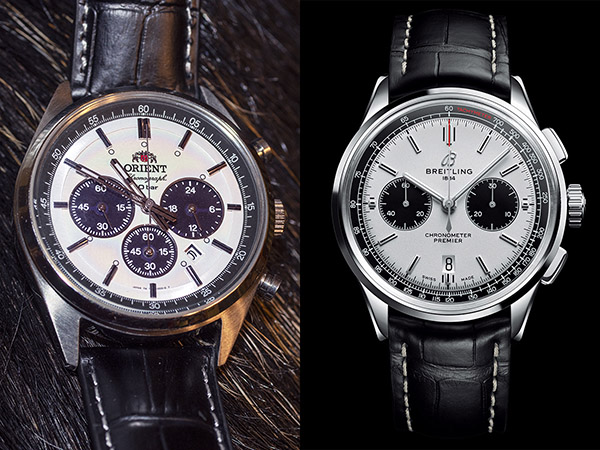
I addressed the fit and comfort issues by ordering an inexpensive alligator style leather band from Strapsco (it was less than $20). The band is black with white leather stitching, and when I put it on the Orient, the watch’s personality changed completely (and for the better). The band matches the watch perfectly and it is much more comfortable. I think it looks much richer (it’s very similar to the $7,300 Breitling Panda mentioned in my earlier blog). I think Orient may be missing the boat here; the Orient Panda should ship with both bands.
The Orient’s solar power feature doesn’t need the sun; interior lighting is good enough. I’ve left my Orient Panda unworn for weeks on a shelf in my office and my office light kept it going. I like the idea that the watch won’t die in the middle of an overseas adventure because the battery gives out. That’s happened to me before.

Although I love the panda concept and look, on the Orient Panda the contrast between the hands and the watch face doesn’t work for me. The hands should stand out so that the time is apparent at a glance. It is not on this watch. Maybe me being an old fart is aggravating the issue. I have to stare at the watch to see the hands against the watch face. The hands should be black, I think, as was the case on my 1970s-era Seiko Panda. Maybe the Orient colors will work for you. Orient offers this watch in three different colors, but I don’t care for the look of the other two. Interestingly, the Orient Panda with the gray face is only $135 on Amazon, undercutting the price on the other Orient Panda color options by $25.
The Orient Panda has bits of lume on the numbers and the hands. The lume is small, though, and like me, they are not terribly bright. I found the lume tough to see at night. It’s also tough to determine where 12:00 on the watch face is at night.
The Orient Panda has a date feature. I’ll chalk this observation up to being a geezer: I found the date to be so small it was useless. Plus, the date is set back from the watch face, which throws a shadow over the numerals (further obscuring the date).
The Orient Panda has three subdials, which I think is one too many. Like many over-subdialed watches, the 24-hour subdial is a dumb thing. I think I can tell the difference between night and day, I know when it’s a.m. and when it’s p.m., and I can do the mental math instantly to convert 2:00 p.m. is 14:00 hours (I don’t need a subdial for this). If Orient had made the subdial hours settable in hourly increments independent of the main dial’s hourly settings, that would be a cool GMT feature that would allow knowing the time in two different time zones. But like every other watchmaker that includes a 24-hour subdial, you can’t set the subdial separately, so to me all it does is add complexity where none is required.
With regard to the chronograph feature, there is a smaller subdial at the 6:00 position that tracks up to 60 minutes, and seconds are recorded with the watch’s main face second hand. That approach is okay, I suppose, but the second hand really disappears against the watch face due to the aforementioned lack of contrast, and the 0-60 minute subdial is too small. I think Orient would have a better product if they eliminated the 24-hour subdial at the 3:00 position and used that real estate for a larger subdial for the chronograph’s 0-60 minute feature. That would knock the Orient Panda down to two subdials, which I think is just right for a panda watch. It would look more like a panda. But hey, what do I know? Orient sells a lot of watches. I don’t sell any.
At an Amazon price of $160.84, the price on the Orient Panda is impressive, especially when viewed alongside the $7300 Breitling Panda. My complaints notwithstanding, the Orient Panda is a beautiful timepiece at an affordable price. It is both a nice piece of jewelry and a usable everyday watch.
Never miss an ExNotes blog:

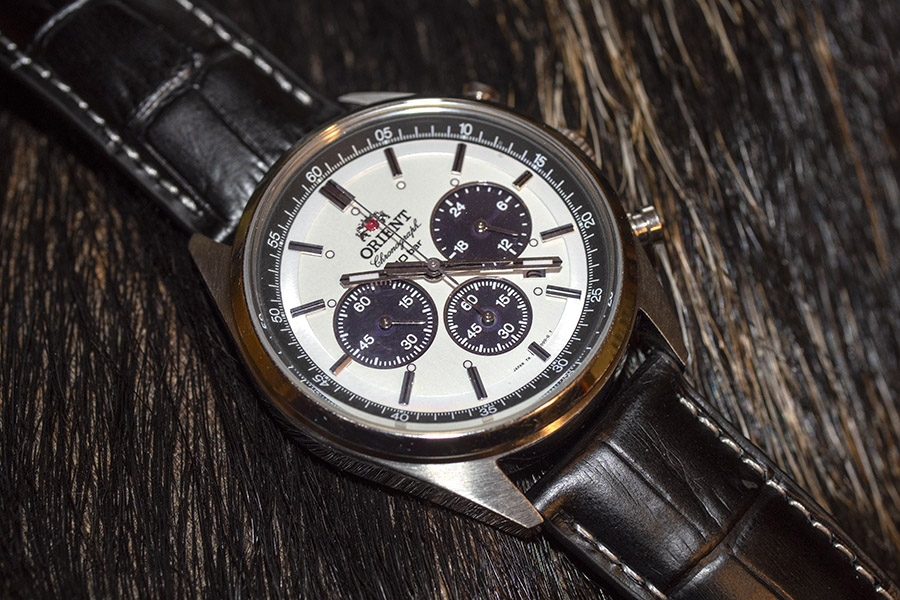


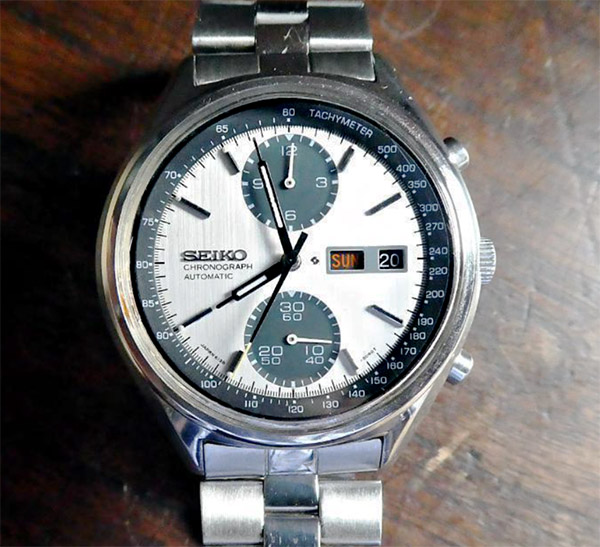

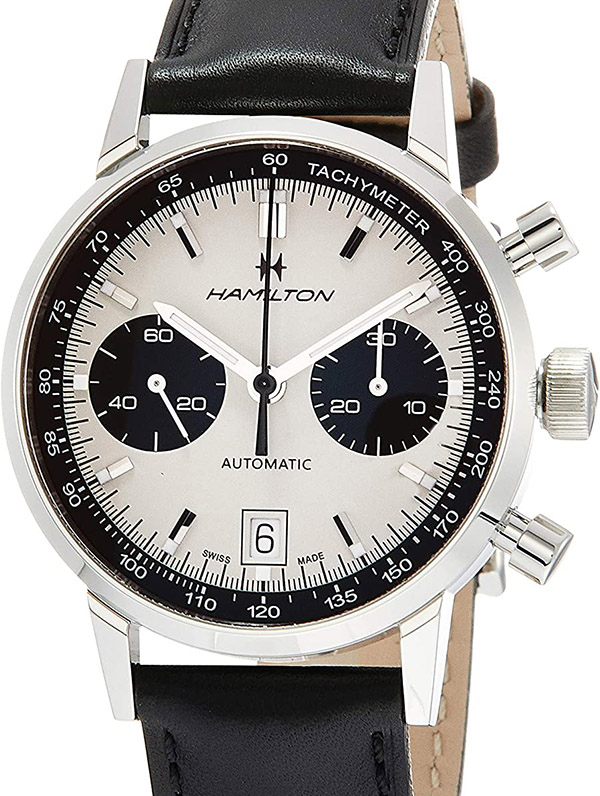
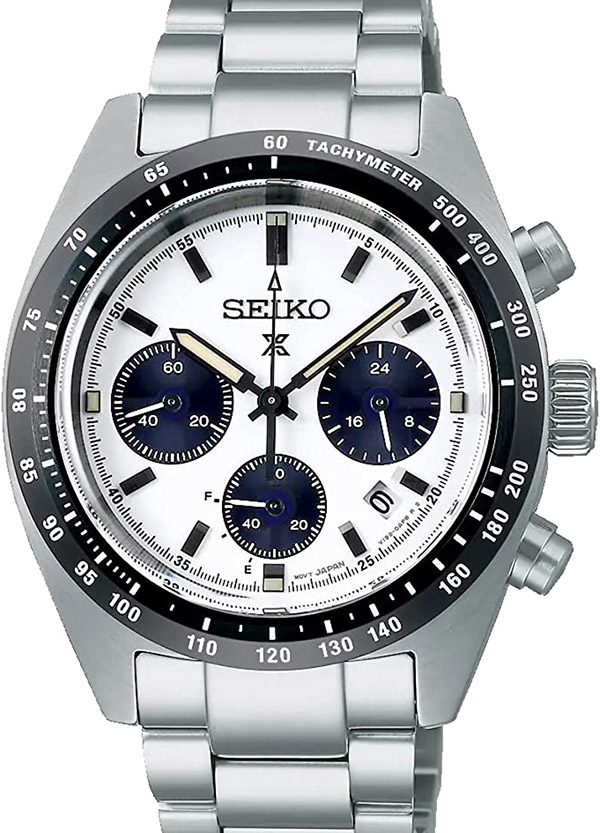
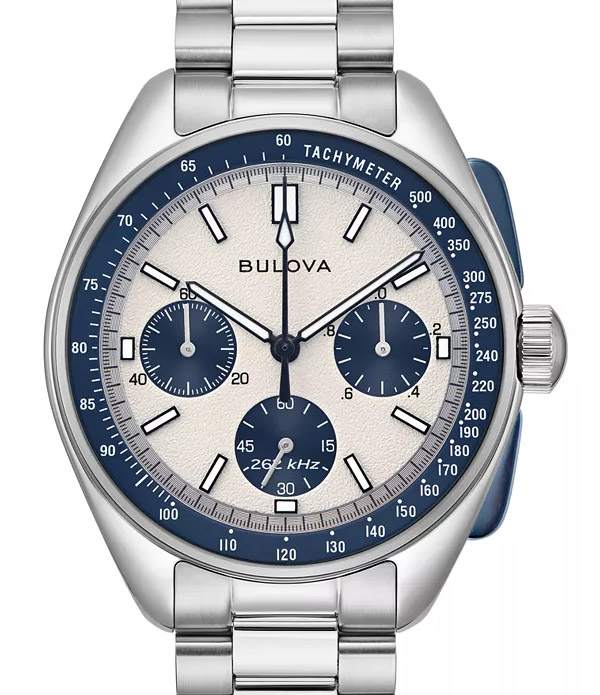
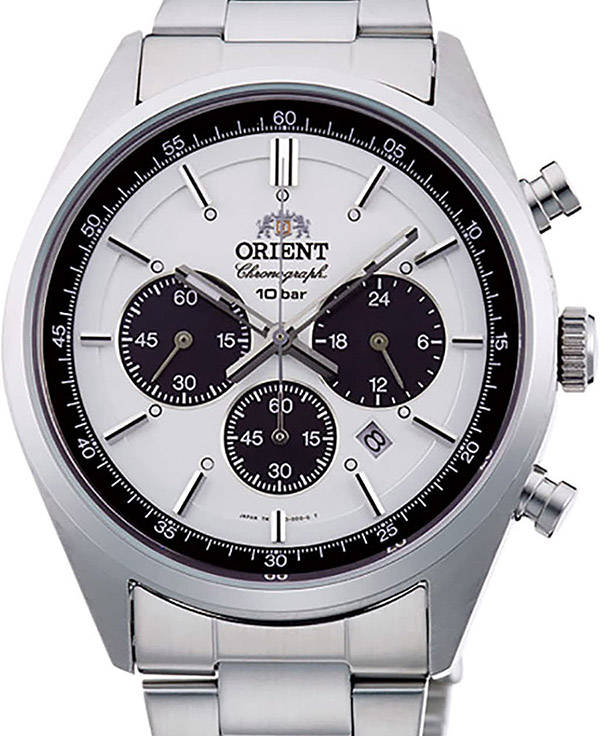
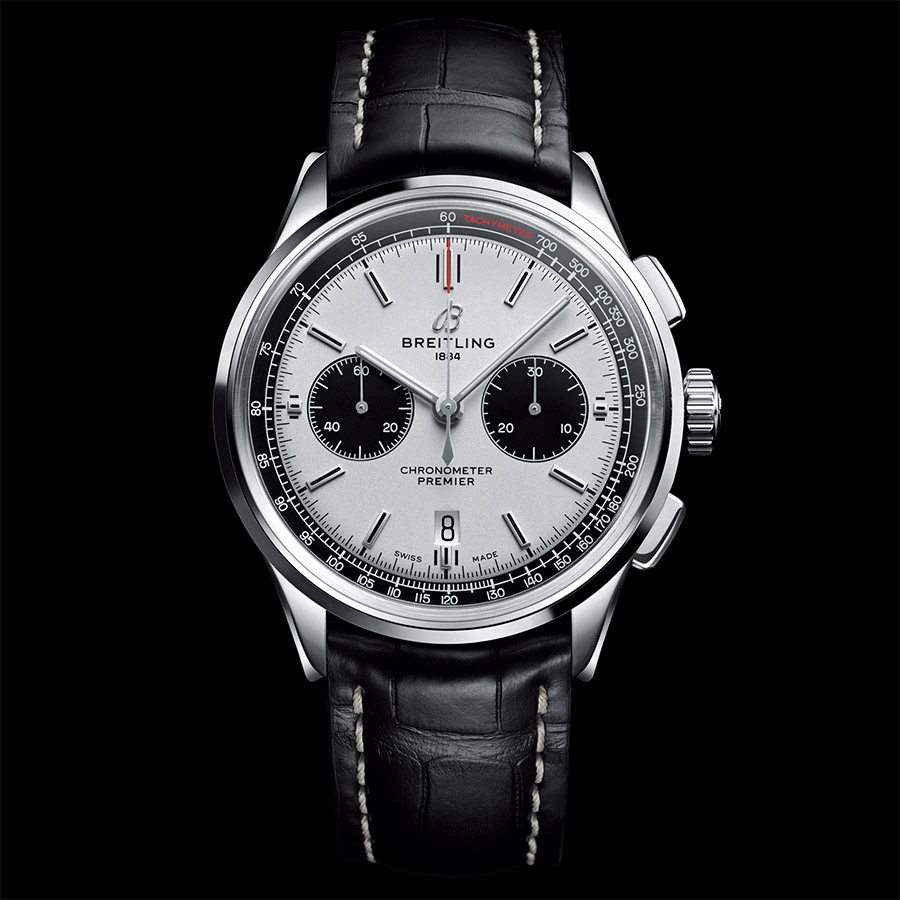
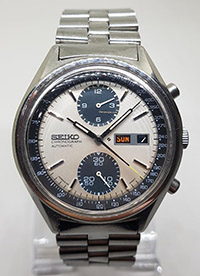 That Seiko watch you see on the right, known informally as “The Panda” in watch collector circles, is perhaps the best watch I’ve ever owned. I bought it at the Kunsan AFB Base Exchange when I was a young Army dude in 1975 for the princely sum of $76, which was a bit of a stretch for me. Oh, I had the bucks. The Army didn’t pay us much, but we didn’t have expenses, either, so $76 was eminently doable. In fact, I bought Seiko stainless steel chronographs from the Base Exchange for my Dad and my grandfather, too. Their watches were only $67, but the Panda had the day and the date on the face, and three timing features: Seconds on the main watch face, minutes on the lower subdial, and hours on the upper subdial. It was a beautiful thing and it was all mechanical. I wore it for about 10 years, and then when Ebay started to get popular I auctioned it away. I was quite pleased with the results. The watch that originally set me back $76 went for just north of $200 on Ebay 30 years ago. Today, though, that same watch brings around $2000. I sold too soon. Go figure.
That Seiko watch you see on the right, known informally as “The Panda” in watch collector circles, is perhaps the best watch I’ve ever owned. I bought it at the Kunsan AFB Base Exchange when I was a young Army dude in 1975 for the princely sum of $76, which was a bit of a stretch for me. Oh, I had the bucks. The Army didn’t pay us much, but we didn’t have expenses, either, so $76 was eminently doable. In fact, I bought Seiko stainless steel chronographs from the Base Exchange for my Dad and my grandfather, too. Their watches were only $67, but the Panda had the day and the date on the face, and three timing features: Seconds on the main watch face, minutes on the lower subdial, and hours on the upper subdial. It was a beautiful thing and it was all mechanical. I wore it for about 10 years, and then when Ebay started to get popular I auctioned it away. I was quite pleased with the results. The watch that originally set me back $76 went for just north of $200 on Ebay 30 years ago. Today, though, that same watch brings around $2000. I sold too soon. Go figure.